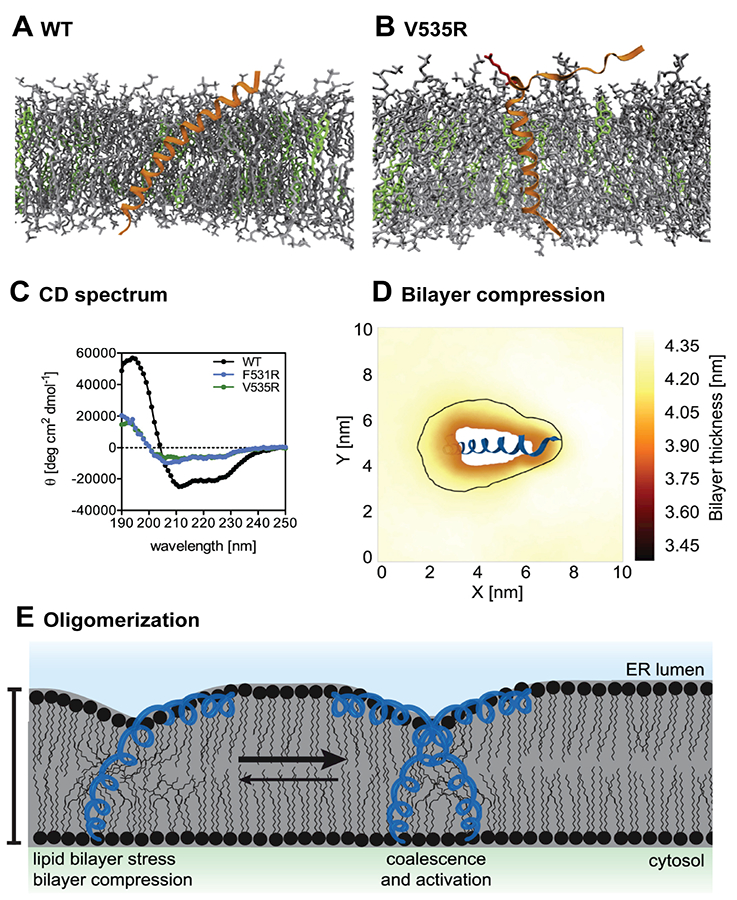Figure 3:

Cholesterol effect on the activation of unfolded protein response. The Ire1-derived sensor peptide and the associated V535R mutant are represented by orange helices in (A) and (B) with the amphipathic helix (AH) highlighted in red. Cholesterols and unsaturated phospholipids (POPC and DOPC) are respectively colored in green and gray. Helicity of the peptides was measured by circular dichroism (CD) spectroscopy (C) and together with MD simulations shows that a conserved structure of the AH is necessary for the sensor peptide to tilt. The presence of cholesterol thickens the membrane, and enhances the membrane compression upon the tilting of the sensor peptide (D). The enhanced bilayer stress induced upon the membrane compression facilitates the oligomerization of Ire1, and promotes the activation of unfolded protein response (E). The images are taken from Halbleib et al [23] with permission from Cell Press.
